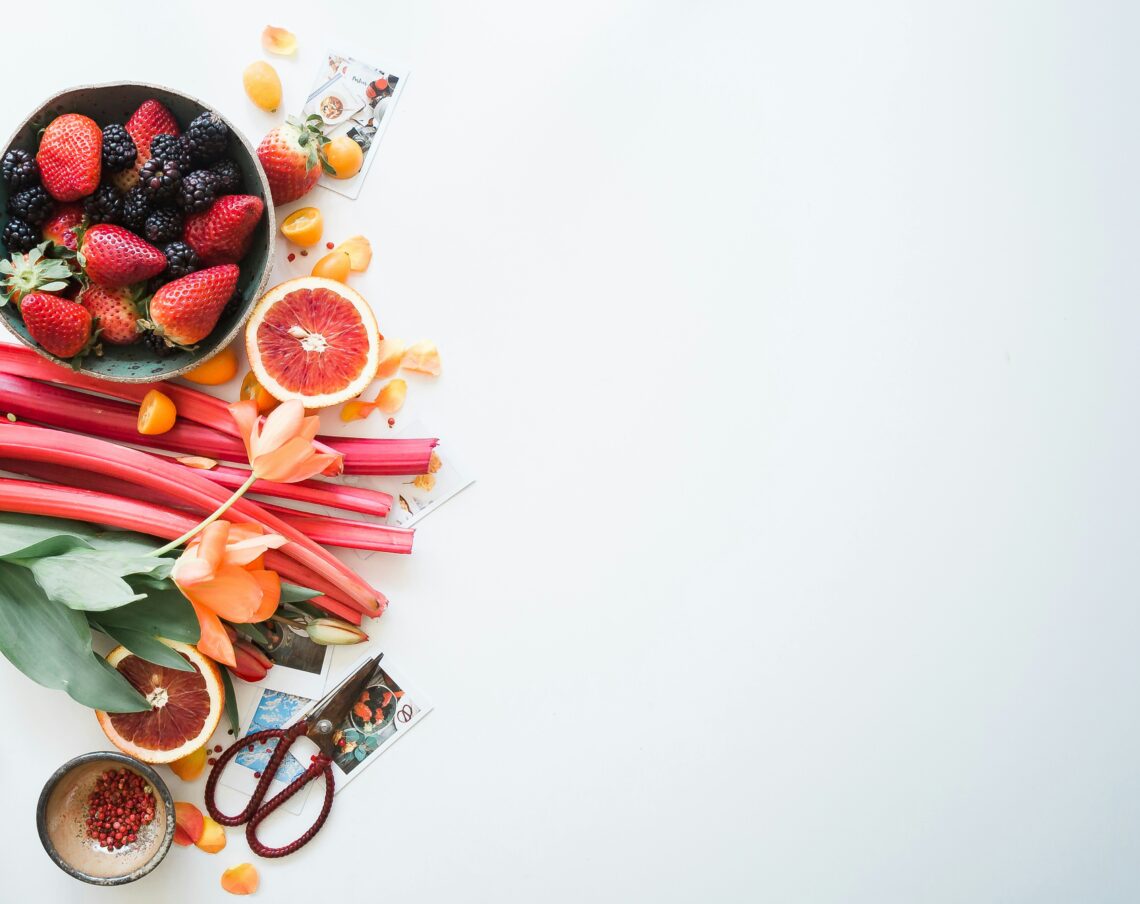Embracing Mindfulness to Enhance Everyday Wellness
In our fast-paced world, where the fleeting moments are often drowned out by the noise of daily responsibilities, the concept of mindfulness may seem like just another wellness trend—like the latest juice cleanse or coconut oil fad. But hold on a second. What if I told you that embracing mindfulness could be the key to unlocking a more balanced and fulfilling life? (Trust me, I was a skeptic too—until I tried it.)
What is Mindfulness, Anyway?
Mindfulness, in its simplest form, is the practice of being present in the moment. It’s about paying attention to your thoughts, feelings, and surroundings without judgment. You might think, “Sure, but I’ve got a million things to do!” That’s exactly the point. Mindfulness allows you to step back, breathe, and ground yourself, even amidst chaos.
Think about it: how often do you find yourself scrolling through your phone while absentmindedly munching on snacks? (Guilty as charged!) Mindfulness encourages us to engage with our experiences fully. Instead of mindlessly chowing down, you might savor each bite, noticing flavors and textures, and—dare I say it—enjoying your food a whole lot more.
The Science Behind Mindfulness
It’s not just a bunch of hippie talk either. A significant number of studies have shown that mindfulness can lead to a host of health benefits, both mental and physical. For instance, research published in journals like The Journal of Psychological Science and Health Psychology has indicated that mindfulness can reduce stress, lower blood pressure, and even improve sleep quality.
Dr. Jon Kabat-Zinn, a pioneer in mindfulness research, once said, “You can’t stop the waves, but you can learn to surf.” This metaphor resonates deeply. Life is going to throw challenges your way—whether it’s work stress, family obligations, or that obnoxiously loud neighbor. Mindfulness doesn’t eliminate these waves; it teaches you how to ride them.
Getting Started with Mindfulness
Now, if you’re wondering how to start this mindfulness journey, let’s break it down into digestible steps. Here’s a little roadmap to guide you:
- Start with Your Breath: The easiest entry point into mindfulness practice is focusing on your breathing. Find a comfortable spot, close your eyes, and take deep, slow breaths. Count to four as you inhale, hold for four, and exhale for four. Repeat.
- Engage Your Senses: Take a moment during your day to engage your senses fully. Whether it’s your morning coffee or a walk in the park, notice the aromas, colors, and sounds around you. (And no, I don’t mean just the sound of your phone pinging.)
- Practice Gratitude: Each evening, jot down three things you’re grateful for. They can be as simple as a warm cup of tea or a conversation with a friend. Gratitude shifts your focus from what’s lacking in your life to what’s abundant.
- Set Aside Time for Mindfulness: Be intentional. Allocate a few minutes each day for mindfulness practice. Whether it’s during your lunch break or right before bed, consistency is key!
It’s crucial to remember that mindfulness isn’t a one-size-fits-all approach. What works for one person might not resonate with another. So, experiment and find what fits best into your life. (I’ve tried meditation while sitting cross-legged on the floor and, let’s just say, it wasn’t my best look.)
Integrating Mindfulness into Daily Life
Incorporating mindfulness into your daily routine can feel daunting, but it doesn’t have to be. Think of it as seasoning your meals—just a little sprinkle of mindfulness can enhance your day without overwhelming it. Here are some practical ways to sneak mindfulness into your everyday life:
Mindful Mornings
How you start your day sets the tone for everything that follows. Instead of diving straight into emails or social media, consider beginning with a few minutes of mindfulness. Stretch, meditate, or simply sit in silence. (I once tried to meditate and ended up falling asleep—so, you know, it happens.)
Mindful Commutes
Whether you’re driving, biking, or taking public transport, commute time can be an excellent opportunity to practice mindfulness. Focus on your surroundings, the rhythm of your breath, or even listen to a mindfulness podcast. Just steer clear of road rage—trust me, it doesn’t help!
Mindful Eating
Ah, the age-old habit of scarfing down lunch at your desk. It’s a classic, and one we all fall victim to at some point. Turning meals into mindful moments can transform your relationship with food. Try eating without distractions. (Yes, that means putting down the phone!) Notice the flavors and textures, chew slowly, and appreciate each bite. You might find that your usual “quick lunch” becomes a delightful ritual instead.
Mindful Conversations
Ever find yourself zoning out during a conversation? (I’ll admit, I’ve been caught nodding along while my mind wanders to what’s for dinner.) Mindfulness can enhance your communication skills. Practice active listening by putting aside your thoughts and focusing entirely on the person speaking. You might be surprised at how much deeper your relationships become.
Mindfulness in Action: Real-Life Examples
To illustrate how mindfulness can enhance everyday wellness, let’s take a look at a few real-life scenarios. These stories remind us that mindfulness isn’t always about sitting cross-legged in silence; it can be woven into the fabric of our busy lives.
The Overworked Parent
Meet Sarah, a working mom juggling a demanding job, her children’s activities, and a household that seems to run on chaos. She often felt overwhelmed, caught in a cycle of stress and exhaustion. One day, she decided to embrace mindfulness.
Sarah began with short, guided meditations during her lunch breaks. She also started practicing mindful parenting—engaging fully with her kids during their playtime instead of multitasking. Over time, she noticed a shift. Those chaotic moments with her children became opportunities for connection, laughter, and joy.
The Busy Professional
Then there’s Mark, a high-powered executive who lived life on the fast track. Meetings piled up, deadlines loomed, and stress was his constant companion. After attending a mindfulness workshop, he decided to implement mindfulness into his work routine.
Mark started each day with a few moments of deep breathing before diving into meetings. He also practiced mindfulness during his commute—using the time to listen to motivational podcasts instead of checking emails. As a result, he found himself more focused, less reactive, and surprisingly, more productive. (Who knew slowing down could actually speed things up?)
The College Student
And let’s not forget Emma, a college student balancing classes, a part-time job, and an active social life. The pressure was overwhelming, and she often felt anxious. After hearing about mindfulness from a friend, she decided to give it a try.
Emma started incorporating mindfulness into her study sessions. Instead of cramming for exams in a panic, she took short breaks every 25 minutes to meditate or take a mindful walk. This approach not only improved her focus but also reduced her anxiety levels. She realized that by being present in her studies, she could absorb information better and, ultimately, feel more prepared.
Mindfulness and Mental Health
As we dive deeper into the benefits of mindfulness, it’s essential to address its significant impact on mental health. The World Health Organization has highlighted that mental health issues are on the rise globally—something many of us can relate to, especially in this age of constant connectivity and information overload.
Mindfulness has been shown to alleviate symptoms of anxiety, depression, and stress. In fact, some studies suggest that mindfulness-based interventions can be as effective as traditional therapies for certain individuals. For instance, programs like Mindfulness-Based Stress Reduction (MBSR) have been successfully implemented in clinical settings, providing patients with tools to manage their mental health.
One of the most crucial aspects of mindfulness in mental health is self-compassion. Often, we are our harshest critics. Mindfulness encourages us to treat ourselves with the same kindness and understanding that we would offer a friend. (I mean, wouldn’t you give yourself a break after a tough day—if only you could find that friend in the mirror?)
Mindfulness Techniques for Better Mental Health
If you’re looking to harness mindfulness for your mental well-being, consider these techniques:
- Body Scan: Lie down comfortably and focus your attention on each part of your body, from your toes to your head. Notice any sensations, tension, or relaxation.
- Journaling: Write down your thoughts and feelings without judgment. This practice can help you process emotions and gain clarity.
- Mindful Movement: Try yoga or tai chi, which combine physical movement with mindfulness. These practices can help release tension while promoting mental clarity.
- Guided Imagery: Use visualization to imagine a peaceful place. Picture the details—the colors, sounds, and sensations—allowing yourself to feel fully immersed.
Mindfulness in the Workplace
It’s no secret that workplaces can be hotbeds for stress and anxiety. Deadlines, meetings, and endless emails can leave employees feeling drained. Here’s where mindfulness can step in like a superhero (cape optional).
Many companies are now recognizing the value of mindfulness in the workplace and are implementing programs designed to promote employee wellness. Google, for example, offers mindfulness courses to its employees, and the results have been overwhelmingly positive. Employees reported increased job satisfaction, improved focus, and a greater sense of well-being.
Creating a Mindful Work Environment
If your workplace hasn’t jumped on the mindfulness bandwagon yet, don’t fret! You can still cultivate mindfulness in your own corner of the office:
- Take Mindful Breaks: Step away from your desk regularly—take a few deep breaths, stretch, or go for a quick walk.
- Practice Gratitude: Start team meetings by sharing something positive. It can shift the energy and foster a more supportive environment.
- Mindful Meetings: Set an intention for meetings by taking a moment of silence before diving into discussions. This can help everyone focus and engage more fully.
- Encourage Flexibility: If you’re in a leadership position, promote a culture of flexibility. Allow employees to take breaks when needed and be open to flexible work arrangements.
The Road Ahead: Sustaining Mindfulness
As with any practice, the challenge often lies in sustainability. It’s easy to get caught up in the whirlwind of life and let mindfulness slip through the cracks. But remember, mindfulness is a journey, not a destination. Here are a few tips to keep it alive amid the busyness:
- Set Intentions: Each morning, set a simple intention for the day. It could be as basic as “I will be present” or “I will approach challenges with calm.”
- Join a Community: Consider joining a mindfulness group or class. The support and accountability can be incredibly motivating.
- Be Patient: Mindfulness is a skill that takes time to develop. Be gentle with yourself and embrace the process.
- Reflect Regularly: Take time to reflect on your progress. How has mindfulness impacted your life? What changes have you noticed?
Ultimately, embracing mindfulness is about finding what works for you. It’s a personal journey, and there’s no right or wrong way to do it. The key lies in commitment—and a little bit of curiosity.
Conclusion: A Mindful Life Awaits
As we wrap up this exploration of mindfulness, I can’t help but reflect on my own journey. There were days when I stumbled and felt overwhelmed, but those small moments of mindfulness made a world of difference. Whether it’s the simple act of enjoying a cup of tea or taking a moment to breathe before tackling the day, mindfulness has the power to transform the ordinary into the extraordinary.
So, why not give it a shot? You don’t need to sit in an elaborate meditation pose or chant mantras (unless that’s your thing, of course). Start small, find what resonates with you, and embrace the beautiful imperfections of life.
In the end, mindfulness isn’t about being perfect; it’s about being present. And as we navigate the waves of life, let’s learn to surf together—one mindful breath at a time.






